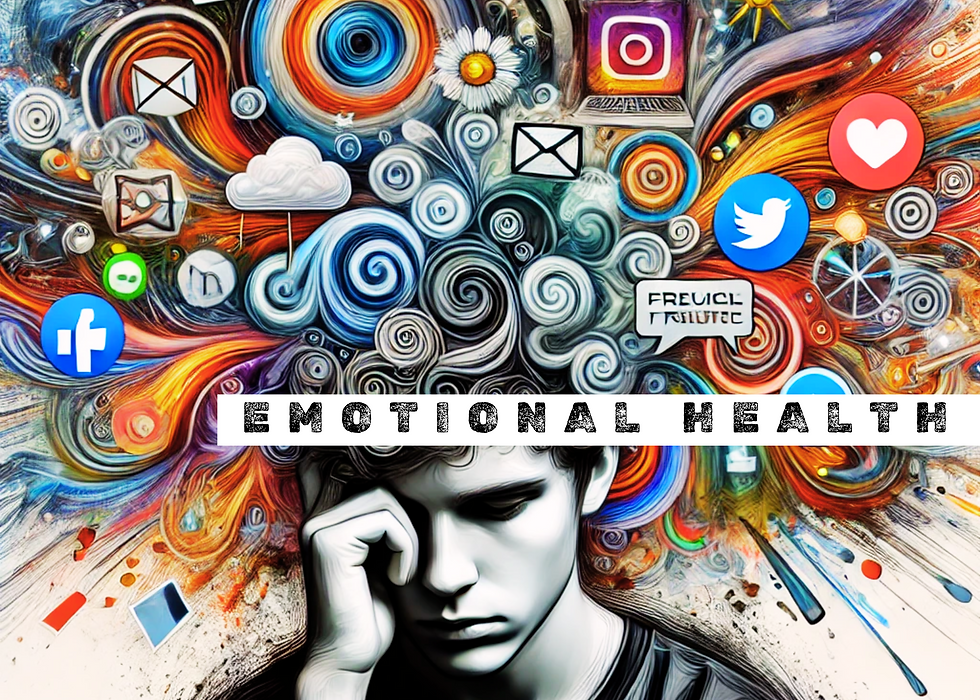Addressing Youth Violence
- Troy Rienstra

- Mar 3
- 4 min read
Updated: Jun 4
Through Community Support
I know firsthand what it’s like to grow up in an environment where violence feels like the only option. At 15, I was already in the correctional system, moving through juvenile detention centers, running from healthy communication, and resorting to aggression instead of understanding. When the only system I knew was punishment, I learned to survive through violence. No one ever showed me another way.
Now, I look back and see that my story didn’t have to go that way—and neither do the stories of the countless young people caught in the same cycle today. If we want to stop youth violence, we have to stop treating it like an inevitable outcome and start recognizing that our communities have the power to change these trajectories before it’s too late.
Youth violence isn’t just about bad decisions—it’s about the environments and systemic failures that shape those decisions. Some of the biggest drivers include:
1. The School-to-Prison Pipeline
According to the Harvard Law Review, students who are repeatedly suspended or expelled are three times more likely to enter the juvenile justice system. Schools have become punishment zones rather than safe havens. Instead of supporting at-risk youth, many are funneled directly into incarceration. When young people are criminalized instead of guided, they internalize the message that they belong behind bars.
2. Poverty & Survival Mindset
A report from the National Center for Children in Poverty shows that kids raised in low-income households are significantly more likely to be involved in violence. When basic needs aren’t met—food, housing, stability—kids turn to whatever means necessary to gain control over their circumstances. Violence becomes a currency in survival mode.
3. Lack of Positive Role Models
Over 60% of violent offenders in juvenile detention come from fatherless homes, according to U.S. Department of Justice data. Without stable guidance, young people turn to gang leaders, social media influencers, or older peers who normalize destructive behavior. When there’s no positive influence, negative influences fill the gap.
4. Social Media & Digital Influence
A University of Chicago study found that youth exposed to violent content online or through video games are twice as likely to engage in real-life violence. Social media glorifies criminal behavior, encouraging kids to prove themselves in ways that only lead to destruction. The pressure to gain clout or defend one’s reputation online can quickly escalate into real-world consequences.
Building a Culture of Support
Instead of just reacting to violence, we need to prevent it at the root. That means showing up for these kids before they make decisions that could ruin their futures. Here’s how we can do that:
1. Turning Schools Into Safe Spaces
Our schools should be places of learning and healing, not punishment. We need:
Restorative justice programs that help resolve conflict without criminalization.
Trauma-informed training for educators so they recognize signs of distress rather than pushing kids out.
On-campus mental health services that provide real emotional support.
2. Mentorship & Positive Role Models
One mentor can change a life. I know, because I didn’t have that growing up—but when I finally found guidance, it gave me the courage to choose a different path. We need:
Community mentorship programs that connect at-risk youth with strong role models.
Sports and arts funding to give kids an outlet for their emotions.
Men in leadership roles stepping up to show young boys what healthy masculinity looks like.
3. Law Enforcement as Partners, Not Predators
Policing our youth should be about protection, not persecution. Instead of seeing every young offender as a lost cause, we should:
Expand diversion programs that give kids a second chance instead of a prison sentence.
Train officers in de-escalation tactics when dealing with youth.
Promote community policing so law enforcement builds trust instead of fear.
4. Supporting Families as the First Line of Defense
The best way to prevent youth violence is to strengthen the homes where kids grow up. We need:
Parenting workshops that teach healthy communication and conflict resolution.
Economic support for struggling families to reduce the stress that leads to violence.
Programs that reconnect incarcerated parents with their children in meaningful ways.
When I was a teenager, I didn’t see any other way out. I believed the streets, the fights, and the system were all there was for me. It took years behind bars for me to realize that I wasn’t just a product of my past—I had the power to change my future. But kids shouldn’t have to go through prison to see their worth.
A Johns Hopkins University study found that at-risk youth involved in mentorship programs were 55% less likely to commit violent crimes than their peers.
This tells us something crucial: Support works. Guidance works. Intervention works.
We have a choice. We can keep blaming kids for their circumstances, or we can step in early and give them the support they deserve. We can make our communities safer not by locking up another generation, but by lifting them up.
Youth violence isn’t inevitable. It’s preventable. And it starts with us.
Stay strong and keep growing,
-Troy Rienstra
_edited.png)



Comments